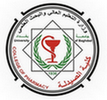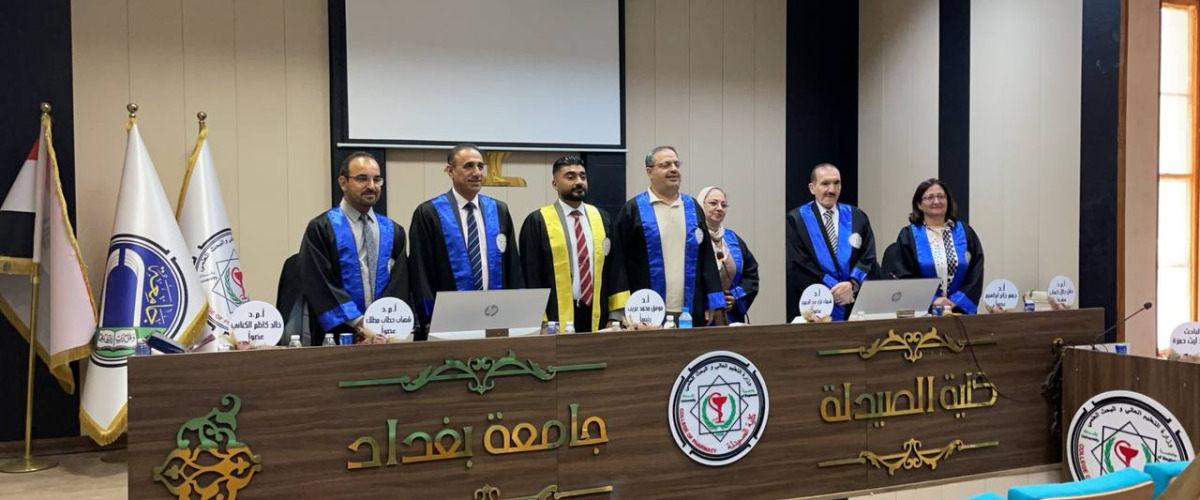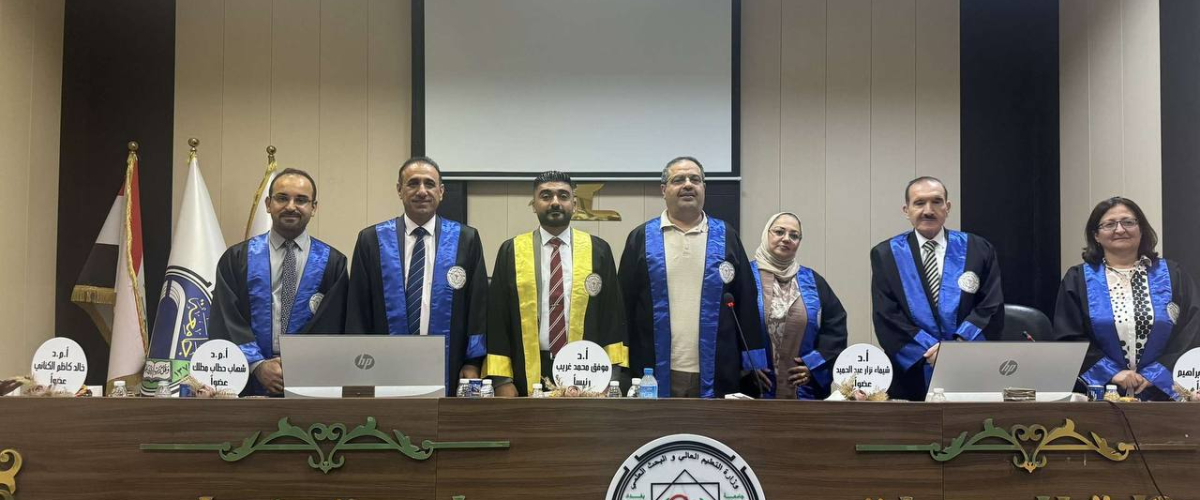The College of Pharmacy discussed the PhD dissertation entitled “Development and Evaluation of Frovatriptan Succinate-Loaded Binary Ethosome in Situ Gel for Brain-Targeted Intranasal Delivery” by the student Mohammed Layth Hamza and her supervisor, Assist. Prof. Hanan Jalal Kassab, at the Pharmaceutics Department. The primary purpose of this research is to create and statistically optimize frovatriptan (FVT) succinate drug-loaded binary ethosomes, enhance nose-to-brain delivery, and improve the rate (Tmax) and extent (AUC) of frovatriptan succinate. 25 formulas of binary ethosomes were prepared by the thin film hydration (TFH) method; each formula was prepared by changing the concentrations of four excipients: phospholipid (PL90H), ethanol, propylene glycol (PG), and cholesterol (Ch); and then to compare these ethosome formulations in terms of vesicle sizes, PDIs, Zeta potential, entrapment efficiency (EE%), and morphologies. The formula with the least vesicle size, higher entrapment efficiency, and lower PDI was selected for incorporation in situ-gel formulation by mixing Poloxamer 407 (18% w/v) with different concentrations of carbopol 934. The in-situ gel with rapid release was selected for the in vivo study. FVT pharmacokinetic and brain drug distribution studies were established for intranasally delivered FVT BE in situ gel G2 and FVT intravenous solution. The study includes a total of 78 female rats (Wister albino rats), weighing 180–220 g, aged 2-3 months; these rats were randomly divided into three groups: negative control, FVT IV solution group, and FVT binary ethosome in situ gel intranasally group. Noncompartmental pharmacokinetic parameters were determined. The study concluded that the frovatriptan succinate-loaded binary ethosome in situ gel was created as a non-invasive drug delivery system for treating migraines. It enhances the rate (Tmax) and extent (AUC, Cmax) of bioavailability, making it a potential delivery option. The study recommended a long-term stability assessment of the prepared formula and expiration date estimation, properly selecting a suitable nasal apparatus to attain maximum drug efficacy, and conducting a pharmacokinetic study to confirm its amelioration of anti-migraine activity.




